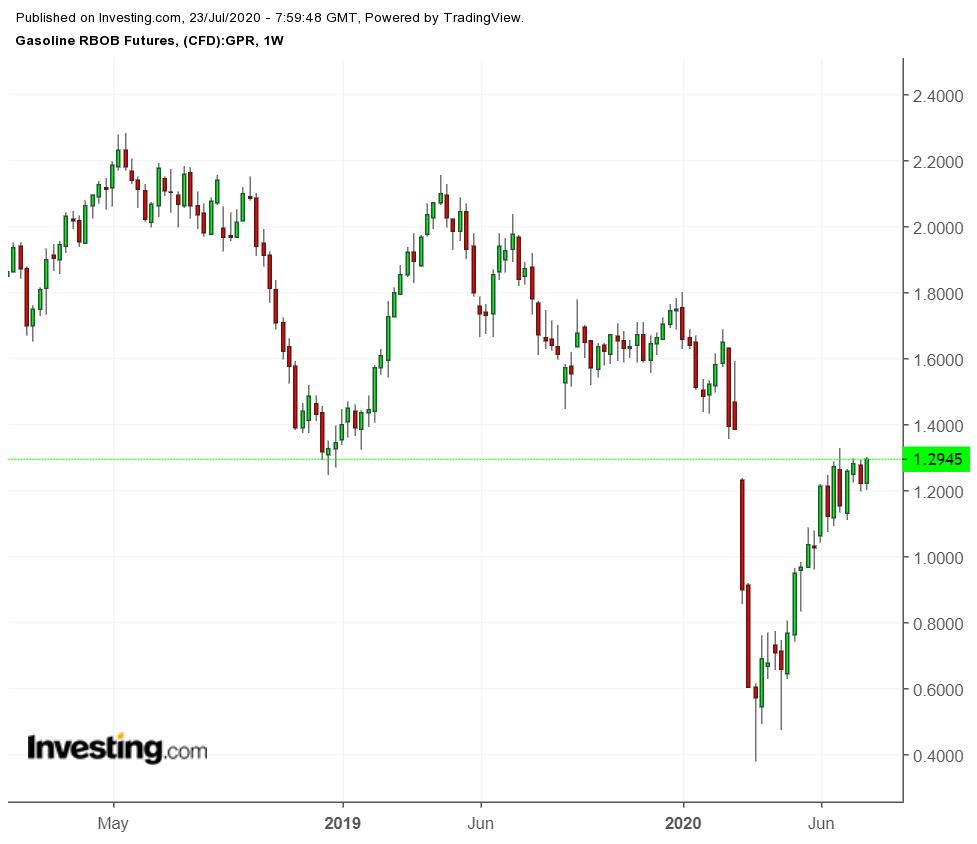The expectation that gasoline demand will rise and return soon enough to pre-coronavirus levels in the United States is simplistic at best.
The truth: the situation with gasoline demand in the US does not look optimistic. After months of disruption, it may be a while until real recovery sets in, given the several complicating factors behind continued low numbers.
Pandemic lockdowns in mid-March and April took a heavy toll on gasoline demand. With nearly every state urging residents to stay home and some even attempting to mandate lockdowns under threat of force, in addition to school and business closures, gasoline consumption plummeted by as much as 50% between the beginning of March and the beginning of April.

By mid-April, when stay-at-home directives were relaxed, some Americans started driving again, and gasoline demand began to climb, steadily improving weekly throughout May and June.
Many analysts took this as a good sign, looking at data showing rising refinery utilization, mobility numbers from Apple (NASDAQ:AAPL) (which have since been found highly inaccurate) and figures from China that indicated that more Chinese workers were eschewing public transportation and choosing to drive.
The popular perception was that US gasoline demand was in the process of bouncing back to pre-coronavirus levels. Yet, despite being in the middle of the summer driving season in the US, the data currently show that gasoline demand has in fact not bounced back.
While it was clear months ago that gasoline usage this year would not reach typically elevated summer levels, demand has failed to return to even pre-coronavirus levels from early March—a time that normally sees much less driving.
Now, gasoline consumption is trending down. The latest data from GasBuddy shows it has dropped for a third straight week in the United States. GasBuddy collects data from retail purchases of gasoline at the pump as opposed to the EIA, which tracks gasoline deliveries from refineries to filling stations.
The most common reason given to explain why gasoline demand is slowing in the US rather than picking up right now is the continued positive testing for the coronavirus in three states that are usually responsible for 25% of US gasoline consumption—Florida, Texas and California. While it is true that some of the depressed gasoline demand comes from people choosing to stay home in areas of increased virus-positive tests, that’s only part of the picture.
Depressed Usage: The Complete Picture
Two factors even more critical to future gasoline demand in the US: the economy and the psychological impact of the virus.
Over 30 million Americans have filed for unemployment. Small businesses, which account for 44% of economic activity in the United States are closing—at first temporarily and now permanently—at rates so high it is impossible to measure right now. According to Yelp, more than half of the businesses that closed temporarily are now closed permanently.
A press release from the Alignable Research Center reported that 900,000 small businesses may have closed so far. Layoffs at large companies are just beginning, and with many school districts deciding against holding in-person classes, gasoline demand will not get nearly as big a boost as it should from commutes to school and work. On top of the functional results of closures, there is the impact of fear on the population that prevents summer travel, commerce and public interaction.
Recessions are not kind to gasoline demand, and this recession will be combined with the ongoing psychological paralysis that has many Americans terrified to leave their homes even to drive to the grocery store.
Some gasoline demand will return as the rate of infection slows in the major driving states, but by then, the hit from the recession will be in full swing. Market watchers must take into account the possibility that current levels of US gasoline consumption are about as good as they’re going to get for the rest of 2020, and factor that into considerations of oil price movement.
